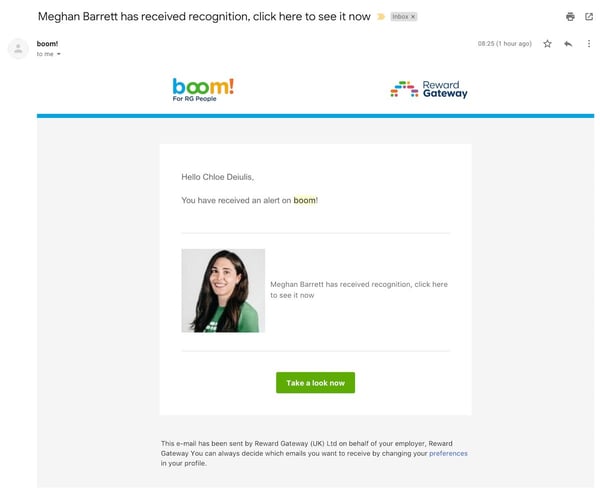It’s no surprise that creating the right kind of positive, encouraging office environment has a lasting effect on employee motivation. The best way to paint the picture of the effect that a performance-based environment has on employee motivation is to tell a story.
Several years ago, I was challenged in working with a highly successful, but very rigid professional services firm. The organisation was reputable with tenured leaders who were committed to a performance-focussed mission.
But they had a big problem – their people were always unhappy.

Working in a performance-based environment
Let’s start back at the beginning. The first time I visited the office, no one greeted me and the team I was working with was sceptical of me. I wondered (out loud), “why are we working together?” I soon learned that the company was just starting to struggle with employee turnover, particularly with new employees. As our initial conversation continued, I was able to understand a small scope of the managerial problem they were having.
The majority of their managers and top-level leaders had been loyal to the company from the start of their career but for many, that meant adopting a managerial style based on the initial culture which was solely performance-based.
The environment felt cold because everyone was too focussed on the bottom line to see the big picture that really included employees’ health and well-being, work-life balance, and motivation to go above and beyond.
Focussing on results alone leads to less-desirable outcomes
All of those factors were being affected by the pressure from managers to be there at 8 a.m., not leave until after 6 p.m., and be available outside of work at the drop of the hat. At this organisation, employees stayed in the same position for years because promotions were few and far between.
They did not have the support or infrastructure from their managers for career development, and managers lacked the compassion their employees craved in and outside of the office. At the time, the company had not connected the dots between the consistently rigid manager behaviour and the sudden increase in turnover.
They thought that if they brought candy to meetings and hosted more happy hours, it would solve the problem.
Some perks are a nice-to-have in the office and can help employees feel appreciated in the moment, but candy isn’t going to help bridge the employee engagement gap alone. (Check out my colleague’s blog on implementing employee benefits that make a difference in employees’ everyday lives).
And even though most appreciate sweets, and after work drinks are something that almost everyone can get behind after a long week, employees still had to drag themselves in (on time of course) the next day to work for a boss that did not create the environment where they felt appreciated, respected, or supported.
Ideally, my situation could have improved even more if managers listened to employees and altered work hours, or provided more flexibility to help improve the work culture. That being said, employee recognition is a great first step to take to build a culture of appreciation and motivation.
We know reinforcing and recognising desirable behaviour in the workplace is a key piece to moving the needle on employee engagement and improving employee motivation. So, how do you reinforce positive behaviors for the managers in your organisation?

Focussing on what employees crave in the workplace
As author Gregg Lederman discusses in his book “CRAVE: You Can Enhance Employee Motivation in 10 Minutes by Friday™,” in order to improve employee motivation employers must give employees the three things they crave in the workplace.
|
The three things employees crave in the workplace: |
|
Respect: Help me feel respected for the work I do. |
|
Purpose: Show me how what I do has purpose, makes a difference, and is relevant to the organisation. |
|
Relationships: Help me build stronger connections with people, especially my immediate manager/supervisor. |
When managers set aside 10 minutes each week to recognise employees for desirable behaviour, employees get what they crave.
That then leads to improved employee engagement, work culture and customer experiences. And this ultimately leads to your organisation’s ability to achieve its desired business results – along with attracting and retaining top talent.
.jpg?width=500&name=Cat%20Lewis%20-%20Robert%20Hicks-4%20(1).jpg)
Focussing on meaningful, strategic recognition
The project with this client was a challenge that proved to me that a nice workplace and fancy benefits are not enough to impact retention. Managers need to have the tools and mindset to utilise recognition strategically to influence the culture and improve employee engagement.
Create guidelines and suggestions, and educate managers about how and when to use these specific awards. Don’t worry about overuse unless it actually becomes an issue!

We know life for leaders is busy, so we've make it really easy for managers to remember to recognise by switching on manager alerts in our employee recognition and reward platform.
Managers receive gentle reminders whenever it's a direct report's work anniversary and birthday, or if they haven't sent any recognition that week. Best of all, they get an alert whenever someone on their team is recognized by someone else in the business – so they get visibility of the people they're impacting.
The alerts are designed to help make busy managers' lives easier, and to help them nurture a culture of continuous recognition at their organisations.
To truly improve employee retention in an organisation, your people need to feel valued, connected to your purpose, mission and values, and feel like their work is being recognised.
But rather than simply checking a box, employee recognition should be done the right way – where it’s meaningful and strategic. Managers should lead the way when it comes to how they interact with the organisation’s platforms (like an employee engagement platform) and set the example for how strategic recognition should be done.

 Ryann Redmond
Ryann Redmond

